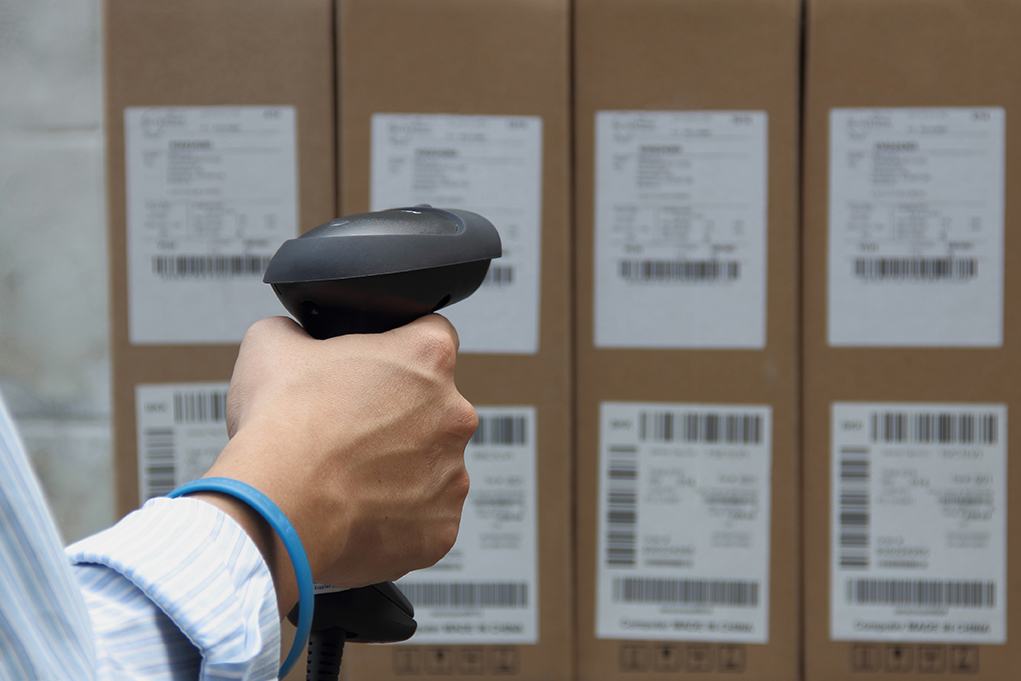Featured Expert: Brady Stevens, Project Manager/GS Mobile Manager at Global Shop Solutions
Inventory management has always been a critical operation, but a number of factors have put even more pressure on manufacturers and distributors to do a better job of tracking their inventory in real-time. E-commerce initiatives rely on accurate inventory to increase sales and keep customers coming back to the online store. Customers now demand faster, lower-cost shipping that is only possible through more efficient inventory handling. Customers also check inventory online before placing an order or visiting a physical location to purchase an item. If you can’t show them what’s in stock, they will take their business elsewhere.
Companies are opening more warehouses in order to place inventory closer to customers, and those facilities are often larger, creating a need for faster mobile communications. Warehouses have to manage higher numbers of low-volume SKUs, and are expected to execute on same-day shipping requirements with increasingly tight delivery windows.
Picking and replenishment processes account for as much as 70 percent of operational costs in a typical warehouse, according to a Motorola Solutions warehouse vision report. And they are often rife with inefficiencies.
Enterprise resource planning (ERP) systems can provide some of the visibility required to address these challenges, but without real-time data these software systems are working with yesterday’s information. That’s where mobile barcode scanning solutions for the warehouse and distribution play a huge role.
Implementing a real-time data collection solution that uses barcode labeling, mobile computers and scanners, and a wireless LAN can provide a return on investment in less than a year, thanks to productivity gains and error reduction in physical inventories alone, says Brady Stevens, project manager/GS mobile manager at Global Shop Solutions, an ERP vendor that partners with EMS Barcode Solutions.
According to Stevens, a higher percentage of clients are now deploying ERP software, barcoding equipment, and solutions like GS Mobile at the same time. “The more education a customer receives about the benefits of mobile barcode scanning and printing, the more likely they are to invest in it”, he says.
Most inventory is already barcoded – a recent Zebra Technologies study found that inbound inventory barcoding and the use of barcoding at the pallet or case level has a penetration rate of more than 80 percent. Your competitors are likely already leveraging barcodes in the DC, or plan to do so.
One GS Mobile customer was able to reduce the time required for manual inventory counts from two full days to less than half a day.

How can a mobile barcoding solution improve your business? Here are five benefits that will have a direct impact on your bottom line:
Inventory optimization: With an accurate view of inventory on hand, companies can avoid over-purchasing, reduce safety stock, re-allocate existing inventory, and identify slow-moving or obsolete inventory that should be discounted or scrapped. This reduces the cost of holding inventory, while also helping avoid the additional cost of unnecessary purchasing. It also frees up cash to invest in product development, hiring, new facilities, and other strategic investments, in addition to clearing space in the warehouse.
Eliminate or reduce the need for physical inventory counts: Once they provide the ERP system with real-time data on what goods are moving in and out of a facility, companies can eliminate costly and time-consuming physical inventories that shut down operations and can often lead to further mistakes. Barcode scanning gives you more accurate data, allowing warehouses to conduct periodic cycle counts without disrupting their workflow.
When physical inventories are necessary, barcode scanning makes it much easier. According to Stevens, “One GS Mobile customer was able to reduce the time required for manual inventory counts from two full days to less than half a day.”
Better operational visibility: As the old saying goes, you can’t manage what you don’t measure. Barcoding solutions can generate accurate data that help you measure your performance against critical metrics and KPIs — fill rates, inventory turns, productivity, picking accuracy, etc. Companies can better evaluate how they are performing relative to customer requirements or service level agreements, improve compliance, and identify and correct operational bottlenecks.
Real-time inventory data also helps companies identify inventory trends as they emerge. If sales of certain SKUs appear to be increasing or decreasing rapidly, companies can order more stock or adjust pricing accordingly. Barcode data also helps measure the effectiveness of promotions and sales, and it can improve the performance of forecasting software.
Labor savings: By eliminating manual inventory processes, companies can reduce the labor required for picking, packing, shipping and other activities. Companies across multiple industries face a shortage of skilled workers. By reducing the amount of non-value-added labor, warehouse operators can help mitigate the effects of that labor shortage and meet increasing demand with additional hiring.
“Companies can typically save a couple of hours a day,” Stevens says, “with four to six workers each saving 15 to 20 minutes. That works out to a savings of $60 per day — or as much as $21,600 per year.”
Improved customer satisfaction: By reducing shipping errors, providing accurate inventory availability data, and accelerating cycle times, you can improve service to your customers. Barcode scanning also enables customer-facing improvements like providing real-time order status and tracking capabilities.
Mobile barcode solutions can enhance an ERP deployment by providing high levels of inventory visibility and control. As customers demand faster and more accurate service, along with real-time order status information, barcoding has evolved from an internally-focused way to improve efficiency, to a valuable competitive necessity.
Contact an EMS Barcode Solutions inventory specialist today to find out how much money your warehouse could be saving with Global Shop Mobility implementation.

